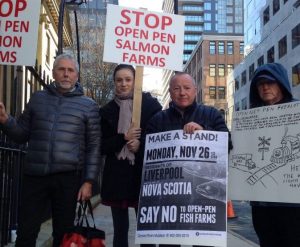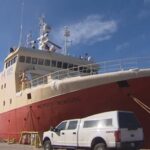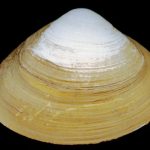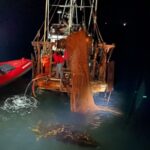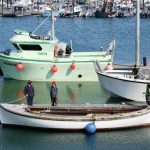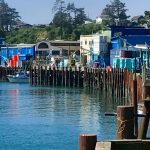Tag Archives: Sea lice
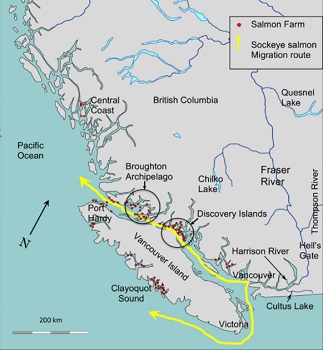
This Year May Decide the Fate of BC’s Wild Salmon – Feds to phase out all Discovery Islands fish farms in 2022
Three decisions may well seal the fate of wild Pacific salmon along the coast of British Columbia this year. The first was the Department of Fisheries and Oceans’ decision to essentially legalize high sea lice infestations on fish farms for periods of time last spring. The second was DFO’s calculated response to the Cohen Commission’s recommendations that fish farming must end by Sept. 30, 2020 in the Discovery Islands unless the federal fisheries minister can show that they cause less than minimal risk to migrating juvenile Fraser River sockeye salmon. Minister Bernadette Jordan said that there was no real risk. The third decision is said to be imminent. >click to read< 19:07
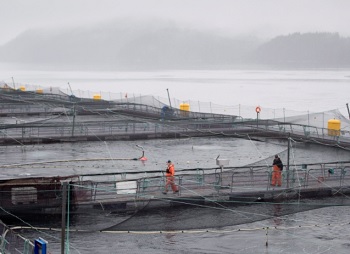 Feds to phase out all Discovery Islands fish farms in 2022 – The federal government says it will phase out all fish farms in B.C.’s Discovery Islands by June 2022. Fisheries and Oceans Canada says no new fish of any size may be introduced into the region from now until the phase-out date. Existing salmon farms can continue to operate in the island archipelago, located between Vancouver Island and the B.C. mainland, until June 30, 2022. After that date they must be free of fish and closed down. >click to read< , Government of Canada moves to phase out salmon farming licences in Discovery Islands following consultations with First Nations – DFO press release, >click to read<
Feds to phase out all Discovery Islands fish farms in 2022 – The federal government says it will phase out all fish farms in B.C.’s Discovery Islands by June 2022. Fisheries and Oceans Canada says no new fish of any size may be introduced into the region from now until the phase-out date. Existing salmon farms can continue to operate in the island archipelago, located between Vancouver Island and the B.C. mainland, until June 30, 2022. After that date they must be free of fish and closed down. >click to read< , Government of Canada moves to phase out salmon farming licences in Discovery Islands following consultations with First Nations – DFO press release, >click to read<
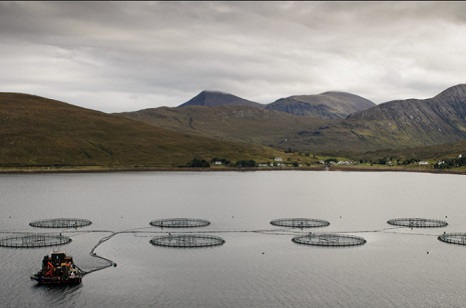
Fury as fish farm pesticide pollution rises 72% in a year
Pollution of Scotland’s lochs from a toxic fish farm pesticide has leapt 72 per cent in a year, according to data from the Scottish Environment Protection Agency (Sepa). Levels of azamethiphos discharged by 76 caged fish farms around the coast increased from 166 kilograms in 2018 to 286 kilograms in 2019. The chemical is known to kill marine wildlife. At the same time emissions of another toxic pesticide, emamectin, from 109 fish farms, rose 26 per cent. Sepa has been trying to limit its use since 2016 because of the dangers it poses to crabs, lobsters and other crustaceans. >click to read< 18:59

New Study – B.C. Salmon farms regularly under count sea lice, potentially putting wild salmon at risk
The study shows mandatory sea lice counts performed by the operators of the fish farms drop by between 15 and 50 per cent when they’re not being done during an audit by Fisheries and Oceans Canada (DFO). “That isn’t really a minor effect. This is a pretty obvious result,” said lead researcher Sean Godwin, who conducted the research for his PhD at Simon Fraser University. Salmon farms are required to perform monthly counts of the sea lice on their fish and make those numbers publicly available. The counts are self-reported, but fisheries officials perform occasional, pre-arranged audits to make sure the numbers are accurate. If the lice counts pass a certain threshold, the operators are required to pay for delousing treatments. >click to read< 15:59

Prince Charles, sea lice, & why salmon farming sucks – Norwegian investors hope to delouse the salmon industry with new facility in Maryland
Business media worldwide have for weeks failed to mention that fact in amplifying a July 7, 2020 announcement that the Norwegian firm AquaCon plans to build a $300 million land-based salmon farm on the eastern shore of Chesapeake Bay. Sea pen salmon farms have worn out their nets, welcome, and often their investment return ratios from Puget Sound to coastal Scotland and Scandinavia. Factory-farming salmon in land-based tanks promises to avoid some of the issues afflicting the aquaculture industry. Land-based salmon farms, for instance, may be better able than sea pen farms to control the disease outbreaks and pollution that have become hallmarks of the land-based salmon industry. >click to read< 13:01
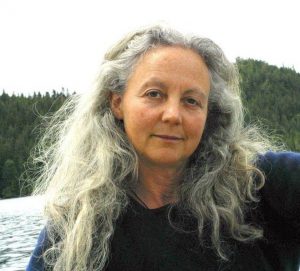
Alexandra Morton: Mark, set, go—reversing the salmon extinction trend
As a scientist and a grandmother, I want to make sure we don’t give up on wild salmon. This year, 2019, is the worst salmon return in the history of this country and the silence is terrifying. It feels like everyone is giving up. Salmon are masters at the art of thriving. They are so good at it all we need to do is listen to them and here is how. Politics aside, the pattern of the 2019 collapse is so clear Siri could navigate it. The Fraser sockeye, which swim through Atlantic salmon pathogens twice in their life history, crashed to 10 percent of what was forecast, while the Nass,,, >click to read< 09:24
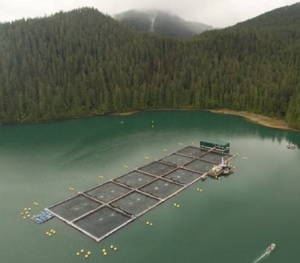
LETTER: On the future of salmon farming in B.C., Ecologists have been sounding the alarm for decades
For the first time ever, three political parties have pledged to transition open net pen fish farms on the B.C. coast to completely closed (likely land based) systems. Environmental sensibility and ecological responsibility are winning out over a regime where predominantly Norwegian multinationals come to our waters to pollute for free. The science is increasingly clear: open net pen farming is harmful to wild salmon and presents unacceptable risk to a keystone species and everyone and everything that rely on it. >click to read< 17:04

Island Voices: ‘Namgis First Nation – Why land-based fish farms work
We’ve seen the impact of sea lice, farm waste, lights and nets on salmon fry, clam beds, birds, sea mammals and other marine life.,,,the technology does exist today to grow large numbers of fish on land. It didn’t exist 30 years ago, and it took Kuterra, and a handful of other pilots around the world, to show the way to full-scale operations. Now, we have a very large farm being built in Florida, and when all its modules are finished, it will grow 90,000 tonnes of fish a year on a 33-hectare site. That’s almost as much fish as all of B.C. grows right now, on a piece of land much smaller than one square kilometre. >click to read<19:35
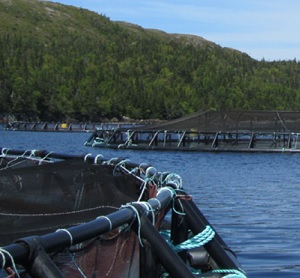
New Brunswick officials suspected pesticide use near lobster pens
An email exchange between employees of Northern Harvest Sea Farms and New Brunswick environment officials reveals the tensions at play last summer and fall during sea lice outbreaks in the Bay of Fundy. The documents — obtained by CBC News through a right-to-information request — surround attempts by the salmon aquaculture company to apply pesticides to its salmon cages in Campobello Island’s Head Harbour. Pesticides can be fatal to lobster, and the salmon farm is near lobster-holding facilities maintained by local fishermen. >click to read<10:19
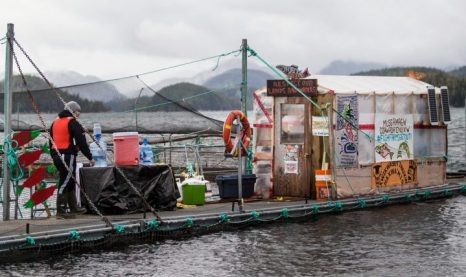
B.C. fish farms: a tangled net
Industrial fish farming began in British Columbia with a few small experiments in the 1970s. By the 1990s, it was operating like a well-oiled machine: Smaller farms had been swallowed by large conglomerates, and imported Atlantic salmon had become the preferred breed — the Herefords of aquaculture.,,, So, are fish farms bad? Federal research scientist Kristi Miller says she understands the frustration of not having a definitive answer. click here to read the story 09:43
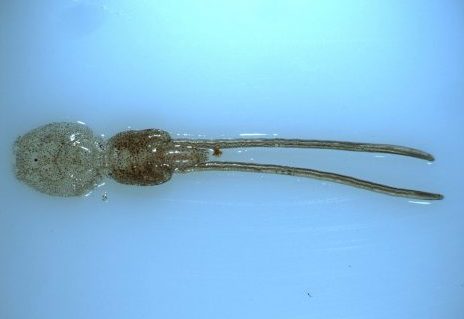
Parasitic sea lice plagues global farmed salmon industry
A surge of parasitic sea lice is disrupting salmon farms around the world. The tiny lice attach themselves to salmon and feed on them, killing or rendering them unsuitable for dinner tables. The lice are actually tiny crustaceans that have infested salmon farms in the U.S., Canada, Scotland, Norway and Chile, major suppliers of the high-protein, heart-healthy fish. Scientists and fish farmers are working on new ways to control the pests, which Fish Farmer Magazine stated last year costs the global aquaculture industry about $1 billion annually. click here to read the story 20:26
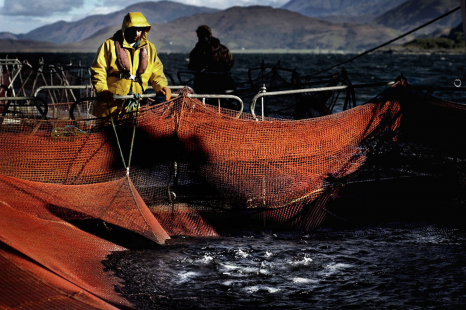
Scottish government accused of colluding with US drug giant over fish farm pesticides scandal
The Scottish Government allowed a US drug company to secretly rubbish a scientific study blaming one of its pesticides for killing wildlife in Scottish sea lochs. The Sunday Herald has uncovered that the £76 billion New Jersey multinational, Merck, hired reviewers to criticise evidence in a scientific study that the company’s fish farm chemical was causing widespread environmental damage. The scientists behind the study and the Scottish Environment Protection Agency (Sepa) privately protested about Merck’s involvement. But they were overruled by government and salmon industry officials who insisted that the company’s role should be kept secret. Merck’s behind-the-scenes influence has been exposed by more than 70 megabytes of internal documents released by the Crown Estate under freedom of information law. They also show that government and industry agreed not to issue a press release on the study. click here to read the story 13:23
Sea lice pesticides used in salmon industry may be hazardous – can harm, or even kill, lobsters, federal scientists find
 Salmosan®, a pesticide currently approved for use in the Bay of Fundy, can be hazardous to lobsters and other species hundreds of metres from a farm, the research conducted at the St. Andrews Biological Station showed. Meanwhile, Alphamax®, which was temporarily used during a sea-lice infestation five years ago, could kill lobsters up to 10 km away, the studies found. Sea lice are a parasitic crustacean that feed on the flesh of farmed salmon until the salmon die or the sea lice are removed. They have plagued the New Brunswick salmon farming industry for years. Read the rest here 21:13
Salmosan®, a pesticide currently approved for use in the Bay of Fundy, can be hazardous to lobsters and other species hundreds of metres from a farm, the research conducted at the St. Andrews Biological Station showed. Meanwhile, Alphamax®, which was temporarily used during a sea-lice infestation five years ago, could kill lobsters up to 10 km away, the studies found. Sea lice are a parasitic crustacean that feed on the flesh of farmed salmon until the salmon die or the sea lice are removed. They have plagued the New Brunswick salmon farming industry for years. Read the rest here 21:13






